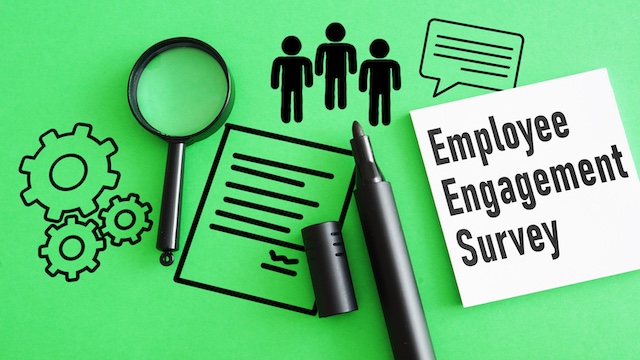An employee promotion is more than just a change in job title; it represents a pivotal moment in a professional’s career trajectory.
An employee promotion is a transformative career milestone that elevates an individual to a higher job level or position within a company, recognizing and rewarding their exceptional skills, dedication, growth, and contributions. It represents increased responsibilities and enhanced opportunities for professional career development. This upward trajectory boosts the promoted employee’s morale and confidence and serves as a motivational beacon for their colleagues. Employee promotions are a strategic tool for organizations, fostering a culture of meritocracy and loyalty while motivating the workforce to strive for excellence. They signify the alignment of individual achievements with organizational goals, reflecting a direct relationship between employee success and company prosperity.
Building a succession plan? Use this framework.
What Are the Types of Employee Promotions?
Employee promotions are tailored to serve specific organizational objectives and individual career paths.
1. Vertical promotions
Vertical promotions are the most recognized form, involving upward movement within an existing job hierarchy. This type of promotion typically comes with a change in job title, increased responsibilities, and often a higher salary. Employees moving vertically advance to higher-ranking positions within their department or the organization as a whole. This type of promotion clearly indicates an individual’s growth and success within the company.
Example: A Marketing Specialist might be promoted to Marketing Manager, assuming greater responsibility for the team’s overall performance and strategic direction, and potentially evolving from a position without direct reports to one that manages team members.
2. Dry promotions
A dry promotion is when an employee takes on higher-level responsibilities or manages more complex work without receiving an official change in pay. Dry promotions allow employees to gain experience and demonstrate their capabilities for more advanced roles. It is essentially a trial period to see if the employee can handle and thrive with heightened duties before formally promoting them. However, this type of promotion comes with a risk that workers feel exploited by having to take on more complex responsibilities with longer hours and added stress without seeing that effort reflected in their paychecks. This can breed resentment and attrition if financial rewards don’t ultimately follow.
Example: A mid-level accountant might undergo a dry promotion, handling advanced tasks like financial reporting oversight usually associated with more senior positions.
5 Things to Consider When Giving Employee Promotions
1. Performance and productivity
A thorough evaluation of an employee’s output, work quality, skills development, and ability to fulfill established goals should inform promotion readiness. Look for evidence of consistently exceeding expectations, going above and beyond job requirements, demonstrating initiative, and contributing significantly to team success. Assess the employee’s ability to meet deadlines, effectively tackle challenges, and creatively solve problems. Evaluate their past performance trajectory and current productivity levels, as well as their potential for further success. Sustained high performance identifies employees capable of assuming the greater responsibilities of a promotion.
2. Critical thinking skills
As employees move up the ranks into more complex positions that involve high-level decision-making, sound critical thinking abilities become imperative. Employees tapped for management must demonstrate judgment and forethought as their responsibilities expand. Promotion candidates must showcase analytical skills that allow them to systematically and objectively evaluate complex situations from multiple lenses. They need both strategic perspective for long-term planning and tactical insight to conquer day-to-day challenges. Sharpened critical thinking skills that enable the employee to visualize downstream implications, spot overlooked considerations, and craft inventive solutions are non-negotiable. Structured decision-making styles and the creativity to connect dots that others miss represent the cognitive potential mandatory for those who must make choices with wide organizational impact.
3. Leadership potential
Gauging an employee’s leadership potential is paramount before promoting them into roles requiring this trait. Evaluate their track record in mentoring, coaching, and developing team members. Assess their capacity to motivate and inspire others, delegate effectively, build a strong rapport with colleagues, and cultivate a positive and productive work environment. Observing their management style, decision-making processes, and conflict-resolution abilities provides insights into their overall leadership competency. This comprehensive evaluation ensures that individuals promoted to leadership roles possess the necessary skills and exhibit the qualities to guide and boost the morale of a team successfully.
4. Business and team contributions
Promotion contenders should showcase a history of enhancing business outcomes and uplifting team performance, emphasizing impact potential over mere tenure. Advancement decisions should be guided by assessing recent initiatives undertaken by employees that supported overarching company goals. The ability to make substantial contributions that positively influence the broader organization signifies readiness for increased responsibilities associated with a promotion. By focusing on the tangible impact an individual can make, companies ensure that promotions are not solely based on seniority but rather also on the proven ability to drive positive change and add significant value to the team and the organization.
5. Company culture fit
The values that shape an organization’s culture should guide promotion decisions. Candidates under consideration for advancement should demonstrate an understanding of and commitment to the company’s cultural priorities. For instance, a company committed to sustainability might prioritize promoting individuals who demonstrate eco-friendly practices and a deep understanding of environmental stewardship. Similarly, a company that champions innovation would seek out leaders who foster creativity, embrace change, and encourage out-of-the-box thinking.

Conclusion
By understanding the considerations that go into promoting an employee, you can create a transparent and fair promotion process that benefits your employees and your organization. Remember, successful promotions are not just about recognizing past achievements; they are about recognizing potential, investing in the future of your workforce, and fostering a positive company culture of growth and development. Take action today and build a promotion process that empowers your employees and fuels your company’s success.
Help your employees take charge of their careers. Download these tips to make career development conversations more meaningful.
Employee Promotion FAQs
Can a company give you a promotion without a raise?
Yes, a company can offer a promotion without an immediate salary increase. Promotions may be based on factors beyond monetary compensation, such as increased responsibilities, leadership roles, or specialized projects. While the title and job scope change, the salary adjustment might follow at a later stage, contingent on performance reviews or organizational budget considerations. It’s crucial for employees to discuss compensation expectations during the promotion negotiation process to ensure transparency and alignment between their evolving roles and fair remuneration.
What qualifies an employee for a promotion?
Promotions are typically granted based on a combination of factors. Job performance is paramount, showcasing excellence in current responsibilities, meeting or exceeding targets, and displaying a strong work ethic. Demonstrating initiative, autonomy, and collaborating effectively with colleagues is crucial. Continuous skill development and a commitment to learning new aspects of the role also contribute. Positive communication, adaptability, and a solution-oriented mindset are valued traits. Long-term dedication to the organization, a history of reliability, and a clear alignment with company values may further enhance promotion prospects. Overall, a blend of competence, interpersonal skills, and a proactive attitude are key qualifiers for employee promotions.
How often should employees be promoted?
The frequency of employee promotions varies based on factors like company culture, industry norms, and individual performance. Generally, merit-based promotions occur when employees demonstrate consistent, exceptional performance, typically after one to three years. Annual performance reviews or structured evaluations help assess readiness for advancement. Promoting too frequently may disrupt team dynamics and create unrealistic expectations, while infrequent promotions might lead to employee dissatisfaction. Striking a balance by aligning promotions with accomplishments, market benchmarks, and career development plans ensures a fair and motivating approach, fostering a culture of continuous improvement and recognizing deserving contributors.
Looking for ways to help your employees create a plan to meet their professional goals? INTOO offers a variety of career development programs, including career coaching, workshops, and trainings to suit anyone in your organization. Contact us today to learn more.











